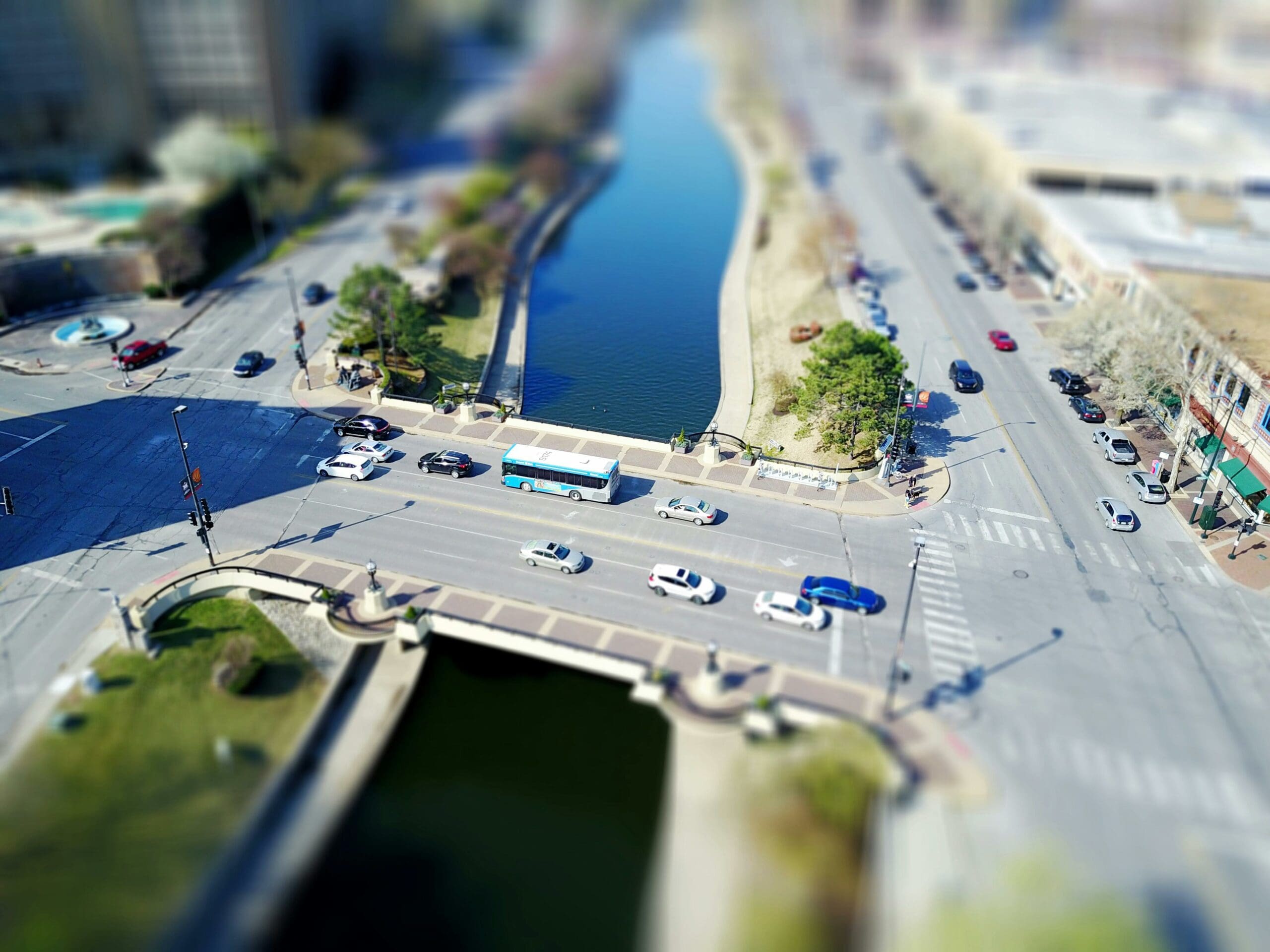
Building Bridges: Engineering Problems Solved with Maths – The Math Behind Strong Structures
Table of Contents
Building Bridges: Bridge building represents a monumental fusion of the physical and mathematical worlds, where the design process is underpinned with complex calculations and engineering design principles. Our community relies on bridges not only as means of transportation but also as feats of architectural prowess, symbols of connection, and embodiments of the human propensity to overcome natural barriers. The marriage of mathematics and engineering enables us to transform raw concepts into tangible structures that can withstand the test of time and nature.

In the conception and construction of bridges, we apply a rich array of mathematical and scientific concepts. These range from understanding loads and support to navigating the logistics of construction techniques and technology. Our engineering challenges are met with creative and practical solutions that only rigorous mathematical analysis can provide. This mathematical rigor is essential for ensuring the safety, efficiency, and durability of these critical structures, making them reliable constituents of our built environment.
The role of rigorous educational standards and an understanding of both cultural impact and economics cannot be understated in bridge engineering. They come together to inform the design process and ensure that each bridge serves not only as a physical connector but as a meaningful addition to the communities it serves. With eyes set on the future trends in bridge engineering, we strive to incorporate new materials, innovative designs, and sustainable practices in our continual pursuit of bridging gaps—literally and metaphorically.
Key Takeaways
- Mathematics is integral to the engineering of safe and enduring bridges.
- Bridge design intricately involves community impact and economic considerations.
- Emerging trends and technologies shape the future of bridge construction.
The Fundamentals of Bridge Design

In the journey of bridge design, we tread on a path shaped by technical ingenuity and rich history. Our focus is unwavering on the bedrock principles that ensure the stability and durability of bridges.
Understanding Basic Principles
The foundational design of a bridge balances a harmonious triangle between aesthetics, function, and strength. Simplified into core elements, bridges must be structurally sound to support the loads they encounter daily; from the weight of the bridge itself to the vehicles, winds, and even seismic forces it may face. The arch, an ancient yet still prevalent feature, exemplifies efficiency in stress distribution, remaining as pertinent in the iconic Golden Gate Bridge as it was in the aqueducts of old.
Historical Evolution of Bridges
Bridge construction boasts a vibrant tapestry that spans centuries. Initially, bridges were modest structures made of logs or stones, serving as mere crossings. Progressively, the mastery of arches and the understanding of materials—like iron and steel—transformed bridges into monumental icons. The history of bridges reflects our civilisation’s advancements, with the Golden Gate standing as a testament to the zenith of bridge engineering—a marvel not only of its era but for ages to come.
Engineering Challenges and Solutions
In the complex realm of bridge construction, we often find ourselves tackling an array of challenges that require meticulous calculations and innovative solutions. Through the fusion of rigorous mathematical analysis and advanced engineering techniques, these obstacles are methodically addressed, ensuring the bridges we build are not only functional but enduring.
Analysing Forces and Tensions
Understanding the complex interplay of forces within a bridge structure is crucial. We conduct detailed analysis of forces to determine how tension and compression affect various components. This involves using mathematical models to simulate and predict how bridges will react to different stress factors, considering weight distribution, wind, and potential seismic activity. Solutions are found through precise calculations that define the type, size, and placement of each structural element.
Material Constraints and Innovations
Choosing the right materials is fundamental for the integrity of the bridge. Constraints such as cost, availability, and physical properties of materials like steel and concrete dictate our approach. We continually explore materials innovation, integrating newly developed composites or smart materials that can adapt to changes in tension and stress, thereby enhancing the safety and longevity of the bridge structures.
Designing for Safety and Stability
Safety is our paramount concern when we design bridges. We focus on creating structures that are resilient and can comfortably sustain daily stresses along with extraordinary events. All components of our design, from the supporting pylons to the road surface, are tested for stability under a variety of conditions. Our engineers resolve issues by rigorously applying mathematical principles to ensure that each bridge can withstand the forces it’s expected to encounter. This meticulous approach to designing for safety and stability ensures we deliver solutions that not only meet current engineering standards but will stand the test of time.
Mathematical Concepts in Bridge Engineering
In bridge engineering, mathematics isn’t just an abstract field of study; it’s a fundamental tool that engineers use to create safe and efficient structures.
Applying Mathematics to Bridge Curves
When we talk about the elegant curves of an arch bridge, we’re actually discussing complex mathematical principles that ensure stability and aesthetic appeal. Each curve is defined mathematically to distribute weight and withstand external forces such as wind or traffic. Geometry comes into play, using specific equations that describe the shape of the bridge. Calculus, especially integral calculus, helps in determining the structural load capacity and resilience of these curves.
Structural Analysis Equations
For analysing the forces within a bridge, we turn to structural analysis equations. These include systems of linear equations which assist in comprehending how loads are managed and transferred throughout the bridge. In essence, we’re solving for different forces and moments acting on each component of the bridge structure. A respecting mathematician or engineer creates models using these equations to predict how a bridge will behave under various conditions, ensuring it remains upright and stable.
Mathematics in Optimising Materials
In striving to use the right materials for bridge construction, mathematics offers the tools required for optimising both the quantity and quality of materials. We use it to calculate the stress and strain on different materials, allowing us to choose the most effective combination. The unit cost of materials is equally important, as it affects the overall budget of the project. By applying optimization techniques, we can derive the best value for money while upholding the safety and durability of the bridge.
Mathematics is the unspoken language of engineering that turns complex problems into tangible solutions, especially in bridge building, where precision is not just desired but essential.
Architectural Considerations
When we design bridges, a fusion of engineering and artistry is essential. It’s our responsibility to consider both the structural integrity and the visual impact of our creations.
Aesthetic Design and Functionality
Our goal is to design bridges that are not only functional but also visually appealing. The aesthetic aspect cannot be an afterthought; it must be integrated from the outset. We look at the shape, colour, and texture of materials to ensure they harmonise with the surrounding landscape and serve the bridge’s intended function. For instance, a bridge in a dense, urban environment might have a sleek, modern look, whereas one in a rural setting might take cues from natural forms and materials.
Incorporating Environmental Factors
Climate is a formidable factor in our architectural considerations. We must account for local weather patterns, temperature extremes, and potential natural disasters. Our designs include features like expansion joints that cope with thermal expansion in hot climates and de-icing systems in places prone to freezing. Thus, we construct bridges that not only stand strong but also exist in harmony with their environment.
Our adherence to these architectural considerations ensures that the bridges we build successfully connect communities while enhancing their natural and built environments.
Practical Applications
In this section, we explore how mathematical principles are applied to solve engineering challenges in bridge construction.
Bridge Types and Their Uses
Every bridge design serves a specific purpose and environment. For example, arch bridges, with their curved structure, are designed to withstand considerable forces. They distribute weight effectively, making them suitable for heavy loads and long spans. The Forth Bridge in Scotland is a classic example of a cantilever bridge, another type of structure known for its strength and use in lengthy spans.
On the other hand, truss bridges use triangular units to distribute forces. They are economical to construct and can span considerable distances, though not as much as suspension or arch bridges. These bridges are often employed in rural or industrial settings for both railways and roads.
In terms of materials, cables are a vital component in suspension bridges like the iconic Golden Gate Bridge. The bridge uses cables to suspend the roadway, dispersing tension and offering the flexibility necessary to endure heavy traffic and harsh weather conditions.
Case Study: Iconic Bridges
The Golden Gate Bridge is not just a marvel of design; it’s a testament to the application of mathematics in engineering. Its construction incorporated complex mathematical calculations to ensure that the cables would support the roadway’s weight while also accounting for the forces of wind and seismic activity.
Similarly, the Forth Bridge represents a case study in using mathematical theory to create a structure that stands the test of time. Its innovative cantilever design was a groundbreaking solution that provided the necessary strength for heavy rail traffic. This bridge, with its network of connecting beams, demonstrates how understanding mathematical concepts leads to robust engineering solutions.
Understanding Loads and Support

In bridge construction, we’re tasked with distributing heavy loads across structures efficiently. The stability of a bridge depends on how well it can bear the weight and transfer it through various components down to the foundations.
Physics of Weight Distribution
The distribution of weight, or load, in bridge design is foundational in ensuring structural integrity. Loads on a bridge typically consist of the weight of the bridge itself, the weight of vehicles, and environmental pressures like wind. A pier, acting as a vertical support, is crucial in dividing the load across the foundations. We must calculate the forces acting on various points of the bridge – including the piers and girders – to ensure that each component can sustain its share of the load without failure.
Optimising Support Structures
To optimise support structures, we carefully analyse and calculate the load-bearing capacity of foundations, piers, and girders. We employ mathematical models, using principles of physics and material sciences to design each component to bear a specific portion of the total load. Our objective is to balance the load distribution so that no part bears excessive stress, which potentially could lead to structural failure. This balance allows us to support massive weights over great spans efficiently.
Construction Techniques and Technology

In the realm of bridge construction, the convergence of modern construction methods and advanced engineering tools has led to remarkable achievements. Our approach to building bridges is deeply rooted in complex mathematics and innovative design solutions supported by cutting-edge computer programs.
Modern Construction Methods
We apply a variety of construction techniques to address the unique challenges that each bridge project presents. Modular construction, for instance, enables us to build sections of a bridge in a controlled factory setting before transporting them to the construction site. This method not only streamlines the building process but also improves safety and quality control. The incremental launching technique is another modern marvel, where we construct the bridge superstructure at one end and then “launch” it section by section across the supporting piers.
Advancement in Engineering Tools
The precision of bridge construction has dramatically improved with the advancement in engineering tools. We employ sophisticated computer-aided design (CAD) software to create detailed designs and visualisations of the bridge before construction begins. This allows for meticulous planning and the ability to foresee and solve potential issues in the design phase. Additionally, computer programs that assist in structural analysis have become instrumental in optimising designs for strength and efficiency while minimising material waste.
The Role of Standards and Curriculum

Before we delve into the specifics, let’s understand that the interplay between standards and curriculum is crucial. These components ensure that engineering education is grounded in consistent expectations and that pupils have the skills to tackle engineering challenges effectively.
National and International Standards
National and international standards, such as the Next Generation Science Standards and the Achievement Standards Network (ASN), play pivotal roles in shaping educational curricula. They set clear, consistent benchmarks for what students should know and be able to do at each stage of their education. In engineering, these standards are designed to ensure that learners from K-12 develop not only a robust foundation in mathematics and science but also the problem-solving skills essential for engineering disciplines.
- Next Generation Science Standards (NGSS): Embodies a multi-dimensional approach intertwining science content with practice and cross-cutting concepts.
- Achievement Standards Network (ASN): Provides a framework for aligning educational goals and benchmarks with assessment and curriculum design.
Engineering Education and Practice
The engineering curriculum, influenced by standards, aims at instilling practical skills alongside theoretical knowledge. Engineering problems are solved with maths and a variety of approaches taught through a curriculum that integrates real-world applications.
- K-12 STEM Standards: Emphasize the integration of science, technology, engineering, and mathematics to provide students with the skills to innovate and solve complex engineering problems.
- Engineering Curriculum: Ranges from elementary introductions to technology and design processes, scaling up to sophisticated problem-solving in high school settings. Its purpose is to prepare students for higher education and the challenges they will face in engineering vocations.
These standards and curricula are not simply bullet points on an academic checklist; they are catalysts for future innovation, laying down the foundational skills necessary for solving real-world engineering problems. Through their rigorous application, we are essentially building bridges—literal and metaphorical ones—between educational theory and practical engineering solutions.
Managing Economics and Logistics

In tackling the complex challenges of bridge construction, we must scrutinise the economic feasibility and efficiency of logistics with precision.
Cost Analysis of Bridge Projects
Our first step is to examine the costs associated with building bridges. A comprehensive cost analysis should encompass all phases, from initial designs to the post-construction evaluations. The financial plan includes direct costs like materials and labour, and indirect costs like project management and administrative expenses. We also consider the size of the bridge and potential disruptions to traffic during construction, which might lead to additional economic implications.
Logistics of Bridge Construction
The logistics of bridge construction are a critical facet of our planning. We draft well-defined schedules for the delivery of materials and equipment, ensuring they’re on-site when needed. We factor in the construction site’s size, strategising the best ways to manoeuvre and store materials. Moreover, coordinating with local authorities helps us mitigate traffic impacts, which is vital in urban areas where the construction could affect daily commutes.
Community and Cultural Impact
We see bridges as more than just structures; they are a testament to the confluence of engineering and mathematics with societal growth and cultural exchange.
Bridges Connecting Societies
Bridges have historically played a crucial role in the expansion of communities. By connecting disparate regions, bridges facilitate commerce, social interaction, and accessibility. For instance, the internet has been metaphorically termed a digital bridge, linking individuals across the world and fostering a global community. In media, iconic bridges often symbolise the unification of cultures, serving as powerful representations in storytelling and journalism.
Cultural Significance of Bridges
In terms of cultural heritage, bridges often embody the ingenuity of past civilisations and stand as landmarks of architectural prowess. The history of bridges is filled with instances where mathematics has been employed not just for function but also to create awe-inspiring structures. Each bridge, with its unique design, tells a story of the cultural context in which it was built, and in turn, becomes an integral part of that culture’s identity.
Future Trends in Bridge Engineering

As we delve into the future of bridge engineering, we’re seeing clear trends that focus on sustainability, innovative materials like steel and concrete, and the increasing influence of technology. These advances are guided by extensive research and the engineering design process to ensure reliability in construction.
Sustainability and Innovation
Sustainability is becoming a cornerstone of modern bridge construction. We are developing solutions that include the use of recycled steel and lower-carbon concrete, which are fundamental shifts towards more environmentally friendly practices. Structural engineers are also prioritising creative design that integrates natural environments with human-made structures. This approach not only reduces the impact on local ecosystems but often results in reduced costs over the lifespan of the bridge due to lower maintenance requirements.
The Influence of Technology on Design
The integration of advanced technology into the engineering design process is revolutionising how bridges are conceived and built. From initial concept to final construction, technology streamlines the process and can enhance the reliability of structures. For example, computer-aided design (CAD) software allows for more precise and flexible design options, while 3D modelling and simulation ensure the viability and safety of the bridge before any concrete or steel is even poured. Furthermore, technology facilitates the analysis of various construction materials under different environmental conditions, allowing engineers to anticipate potential issues and address them proactively.
Frequently Asked Questions
Bridging the gap between complex engineering challenges and their solutions requires a deep understanding of mathematics. In this section, we’ll explore how maths is crucial in every step of bridge construction, from initial design to final stability checks.
What are the essential mathematical calculations involved in designing a bridge?
Calculating the potential loads, the maximum stress capacities, and the bending moment are essential in bridge design. We utilise mathematical principles to ensure that the structure can withstand both the dead load and live load it will encounter throughout its lifespan.
Could you explain how trigonometry is applied in bridge construction?
Trigonometry helps us determine the precise angles and distances required for the components of bridge structures, particularly for creating stable arches and calculating the forces acting on different parts of the bridge.
In what ways do engineers use physics and mathematics to ensure the stability of bridges?
Physics and mathematics are intertwined in identifying the forces at play within a bridge structure. Through calculations of equilibrium and material properties, engineers ascertain that the bridge can endure various forces such as tension, compression, and torsion.
How does the analysis of force diagrams assist in the construction of truss bridges?
Force diagrams allow us to visually represent the forces acting on a truss bridge, ensuring that the distribution of stress throughout the structure is understood. This assists in optimising the bridge design for maximum stability.
What role does calculus play in determining the structural integrity of bridges?
Calculus enables us to calculate factors like the changing stress and strain on a bridge. It’s applied to understand and design the curvature of bridges and to evaluate the effects of dynamic loads over time.
Which mathematical principles are crucial when calculating load distribution in bridge design?
Principles including statics and dynamics are crucial to calculate how loads are distributed throughout a bridge. This includes understanding how loads move through the structure and how they affect the overall stability and strength of the bridge.


Leave a Reply